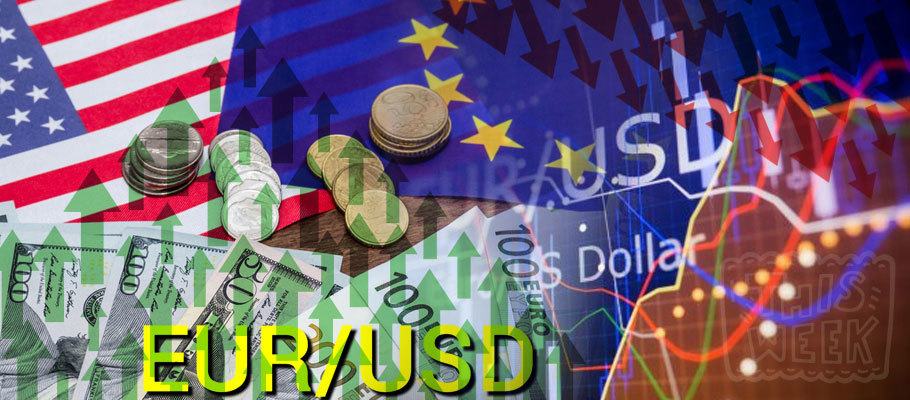
Published: July 19th, 2023
EURUSD began this week at the highest point since the Ukraine conflict broke out, but analysts say technical resistance of around 1.1272 might stall the recovery unless the Renminbi suffers deeper losses or risk assets experience a sustained rally in the coming days.
EUR looked set to benefit this week as USD exchange rates softened and two G10 peers on the China Foreign Exchange Trade (CFETs) Index rallied. Euro and Yen were carried along on the updraft after the Chinese economy posted slower-than-expected growth in the last quarter.
Figures released by Beijing on Monday 17th July pointed to a Q3 acceleration in the world's second-largest economy, but at a pace that was slower than consensus expected. Reasons for the lag included softer household spending growth, leaving the Renminbi exposed to losses as this week's trading session began.
Analysts at Societe Generale’s FX Strategy Unit wrote that the tendency to see downbeat surprises from China ‘was temporarily interrupted last week when the latest Yuan lending data exceeded market forecasts’. This week’s GDP figures, they said, pulled Renminbi back down to the 2023 norm.
‘It wouldn't surprise us if the tactical moves seen last week will continue to play out and with more buying the dips for EURUSD.’
EURUSD was trading at levels not bested since March 2022, though gains were driven by a further softening of the Greenback, which dropped broadly last week.
‘We are seeing disinflation signals from the US alongside skepticism that the Fed will be able to raise rates after the July meeting. That suggests a soft Dollar will likely prevail in the short term.
'There are also signs that that the ECB’s rate hike cycle is approaching its peak. Taken together these factors point to a period where EURUSD may struggle to make gains after the summer season ends.’
In April, analysts at Bloomberg were looking for EURUSD to deliver near-term gains, suggesting the pair would have enough momentum to pierce technical resistance.
The Euro to Dollar rate aimed for the 1.10 handle on Tuesday, 11th April after the long Easter weekend. However, it fell roughly 28 pips short before settling back under 1.09 in early European trading.
It levelled out at 1.0900, however analysts continued to look for a breakthrough, pointing to recent US data that raised the spectre of recession in the world’s largest economy.
European prints were mostly sunny in Springtime, providing the ECB with enough contrast against the US Fed to carry on its rate-hiking timeline and wrestle core inflation to the ground.
ECB actions were guided by improving data out of Germany. The Eurozone’s biggest economy looked as though it would escape recession while a weakening US labour market could cool any hawkish sentiment by UD Fed officials. With those dynamics behind it, analysts thought EURUSD could see constructive price action.
The EURUSD rate did in fact trend higher after establishing a key support level around 1.05 in late-April. The Euro’s ascent was stwady, leading to stability for the pair above the 21-day exponential moving average, where key support held at around 1.0800.
That was a reversal from late February, when EUR was on the back foot against the Greenback.
An upward adjustment to the terminal rate and cooling rate cut expectations for later in 2023 spurred new life into USD at the start of the year. Rising investor expectations about the timing of the Federal Reserve's peak interest rate hiking cycle also added wind to the Dollar’s sails.
In January, consensus had the last rate rise set for March, but an additional two hikes were then added to the table. The likelihood of a Fed rate cut in the latter part of 2023 had receded, giving the Dollar support after an underwhelming end to 2022 and beginning to 2023.
EURUSD looked set to hit 1.10 in January but had fallen back by early February as new US economic data flummoxed analysts, who sent mixed signals into the market.
A surprising mix of strong wage data, labour market dynamics, inflation figures and retail sales suggested the American economy was robust enough to achieve the Fed’s above-target inflation levels. EURUSD started to retrace previous gains as a result.
Analysts at Barclays Forex Strategy Unit said ‘Stronger American growth data blended with firmer inflation at the beginning of 2023 added optimism to markets. Forex traders are now pricing-in a more hawkish outlook for Fed policy’.
Looking back to April of 2022, spiking oil prices were pushing the Euro toward multi-year lows as forex traders bet that the European Central Bank would delay plans to raise interest rates later in the year.
Prices for Brent Crude surged above USD 130 per barrel in March 2022, the highest level for almost 13 years. Wholesale gas prices meanwhile more than doubled from the previous month on fears that the US and EU were considering an unequivocal ban on Russian oil.
The US did move forward with plans to ban purchases of Russian oil and gas, with other G7 countries following suit. European natural gas prices responded by hitting an all-time high.
In a note to investors, the FX Strategy unit at Crédit Agricole wrote that news of major Western importers considering coordinated sanctions against Russian energy exports sent oil and other commodity prices soaring, especially in Asia.
‘Conjecture around ramped up sanctions in the energy sector has started with a bang. Stocks have tumbled and crude prices are soaring on Asian markets as traders' price-in the impact of a US and EU ban on Russian crude supplies’.
In response to the supply shock, Crédit Agricole said a ‘binary move’ in currency markets was underway, one that favoured the fiats of energy exporting countries. Net energy importing countries, in contrast, would see their currencies take a hit.